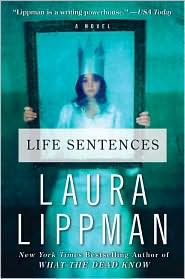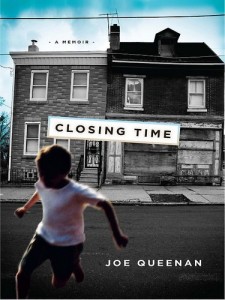I love it when the New York Times introduces me to the rituals and stories of cultures I would otherwise never encounter. White people from Pittsburgh, for example. Today’s food-section piece on the local custom known as the cookie table was a series of delights, starting with finding out about the tradition in the first place. Pittsburgh brides celebrate their wedding not only with cake, but with a long table groaning with cookies, all makes and models, heavy on the ethnic varieties made only on special occasions, like pizzelles and lady locks. How could I have spent my whole life in the Midwest without knowing this? (Answer: Probably by never getting closer to Pittsburgh than the freeway exits.)
Many people have noted many times that the country is becoming increasingly homogenized, and they’re right. It’s nice, then, to read paragraphs like this:
No one knows for sure who started the tradition, or why it hasn’t exactly taken hold outside this region. Many people credit Italian and Eastern European immigrants who wanted to bring a bit of the Old Country to the big day in the New World. Given that many of them were already well practiced at laying out a Christmas spread, baking 8 to 10 times as many treats for a few hundred special friends and relatives may not have seemed like such a stretch.
But even amid the increasing professionalization of the wedding, with florists mimicking slick arrangements ripped from Martha Stewart’s magazines and wedding planners scheduling each event down to the minute, the descendants of those Pittsburgh settlers continue to haul their homemade cookies into the fanciest hotels and wedding venues around the city. For many families today, it would be bordering on sacrilege to do without the table.
Elsewhere in the food section was a piece on the southern “little layer cake,” the towering cakes turned out by little old ladies, constructed of not two or three layers, but a dozen or more, each one relatively thin. Alan grokked it immediately: “You get more frosting that way.” These are the cakes made for Fostoria cake stands like mine, I suspect, and while making one doesn’t really interest me, I’m fascinated to read about the technique involved, which requires a certain do-si-do with the oven and the frosting station — the cakes are iced while warm, and use boiled frosting, which is difficult to make. Kim Severson, the Times’ peerless food writer, finds the sorts of details that would shame the most skilled anthropologists:
…There are Lane cakes, made with an 1898 recipe named after Emma Rylander Lane of nearby Clayton, Ala., who called it her prize cake. The cake was a childhood favorite of President Carter, whose hometown of Plains, Ga., is a few hours’ drive from Clayton. Harper Lee, who grew up in Monroeville, Ala., mentioned Lane cake in “To Kill a Mockingbird.”
The Lane cake is made with lots of egg whites, the yolks reserved for a rich filling of ground pecans, coconut and raisins flavored with bourbon or local wine. That makes it something of an illicit treat here in dry Geneva County, which is thick with non-drinking Baptists, some of whom substitute grape juice.
Like many of these layer cakes, the Lane cake gets better with a little age. Some cooks still store theirs in a tin with cut apples, to keep it moist while the alcohol mellows and flavors meld.
Whenever I watch “Top Chef,” I’m always amazed at how many of these kitchen wizards, who can turn out sous vides and cat-vomit “foams” and other latter-day trends with such ease, confess they are utterly flummoxed when it comes to dessert and make these soggy fruit things atop some sort of wan pastry thing with a fancy Italian name. How hard is baking? Piece of cake. If you’ll permit me the foodie wordplay.
Bloggage? Oh, a little.
David Leonhardt’s column headline says it all: If Health Care Reform Fails, America’s Innovation Gap Will Grow. Really? People choose jobs based on whether they get health insurance? Really? My husband has been saying this for year; maybe he should be invited to a meeting in Washington, but let’s let Leonhardt state the obvious:
Economic research suggests that more than 1.5 million workers who would otherwise have switched jobs fail to do so every year because of fears about health insurance. Some of them would have moved to companies where they could have contributed more, and others would have started their own businesses.
This link between insurance and innovation isn’t relevant merely for the obvious reason that Congress is in the late stages of debating health reform. It is also relevant because the United States is suffering from an innovation deficit.
Nobody lives forever: God kills Oral Roberts for failing to raise more money.
I went looking for Pilot Joe last night on FlightAware, and found that contrary to his stated intention to fly to Chicago, his plane was actually en route to Alabama. Does Mrs. Pilot Joe know? Hey, Joe — pick up a little layer cake next time you’re there.
And with that, I’m away.


